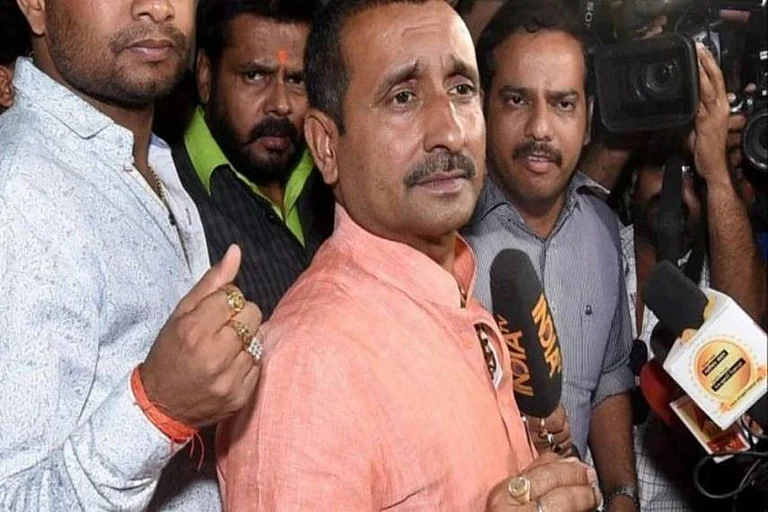Last week, it came out with India's largest public issue to raise a maximum of over $1.5 billion. In less than three weeks before itsIPO, it raised an additional $750 million through private placements. It hired Rahul Dhir, 40, a hotshot Wall Street investment banker with Merrill Lynch and one of the first to make a strong case for its IPO, as the CEO to launch the mega issue. It claimed to have made the biggest oil and gas discovery in India since 1985 and hopes to account for a fifth of domestic production by 2010.
With 29 discoveries in the past dozen years, Cairn India, an offshoot of the UK-based Cairn Energy, was billed as one of the most successful exploration firms in the country. Agrees V.K. Sibal, director general, hydrocarbons (DGH), who heads India's oil and gas regulatory authority and does have some reservations against Cairn, "It has come to India with fresh ideas. It's an aggressive firm, which has already drilled 100 wells and chased discoveries until it first struck oil in its 16th well."
Despite such a build-up, several controversies rocked the IPO. It was an unusual flare-up, with the state-owned ongc and the DGH raising questions about the claims made by Cairn. A few analysts gave the "don't buy" recommendation to the issue, which seemed jinxed as the Sensex lost 400 points the day it opened. There were storms in various wells as Dhir & Co slid along slick roadshows to contain the spillover. As it partially blamed "vested interests", Cairn sailed through choppy seas; the issue was subscribed 1.5 times after two days.
But these events highlighted the larger issues that plague the Indian energy sector. They presented its inherent weaknesses; an industry source maintains that "the oil development business is a risky one, and all we do is to derisk it". They painted a scenario where there are conflicts between the private players and the regulator, and among the various state-owned and private competitors. More importantly, they sent a message to the investors that policymaking in this risky business has to evolve rapidly. Finally, according to Cairn, they missed the wood for the trees—that its largest discovery in Rajasthan would make India less dependent on imports.
It started with doubts about the quantity and quality of Cairn's reserves, especially in its largest Mangala field in Barmer, Rajasthan. In early September this year, DGH Sibal shot off a letter to stockmarket regulatorSEBI, hinting that Cairn might be overstating its reserves in Rajasthan. It quoted a Cairn press release that stated that its estimated reserves were 3.6 billion barrels of oil equivalent (bboe), of which 2.2 bboe were "under active development planning" and the remaining had been "identified in other fields under review".
Sibal contested these claims and wrote that of the 15 discoveries in Rajasthan, only four (with 1.16 bn barrels of oil originally in place or OOIP) had been approved. The "commerciality" for another two discoveries (with 274 mn barrels of OOIP) too had been acknowledged. "As the remaining discoveries are at various stages of appraisal...hence the in-place reserves for these discoveries have not been approved...," the letter noted. Adds a DGH source, "We wanted Cairn to tell us how it had arrived at the figures. It's not acceptable if its estimates are more than what's been approved by us. For, then, anyone can exaggerate reserves and play the market."
The regulator was trying to stop the then-prevailing practice by oil majors of informing the DGH and making an announcement simultaneously. Explains an industry source, "A week later, the DGH clarified on the Cairn matter. It's an old issue that was raked up just before the issue." He emphasises that the IPO's red herring prospectus mentions that the "gross proved plus provable hydrocarbons initially in-place" in Cairn's Rajasthan Block is 3. 66 bboe, or slightly higher than the figure mentioned in the earlier press release. Cairn says it works closely with the DGH, keeps it informed about its announcements and understands its obligation to notify it about all its discoveries.
What irked Cairn more was that it was blamed for things that were someone else's responsibility. This related to the pipeline (anything between 300-700 km) that will ship the Rajasthan crude to the various refineries. Many criticised the issue as one of the risk factors in Cairn's prospectus mentioned that "we have no control over the construction or operation of the pipeline...there is a risk that the pipeline may not be constructed in time for the commencement of crude oil production from the Mangala field.... We are aware of no firm agreement for the construction of the pipeline or its specifications, including its route...."

Without the pipeline, the production wasn't going to start in 2009. Without it, there weren't going to be any cash flows. Without it, there weren't going to be returns for potential investors. Without it, the IPO was as good as dead. Even a delay was going to impact production and profitability. In addition, the pipeline resulted in a war of words between Cairn and ongc, whose subsidiary, MRPL, is the government of India's (GoI) nominee for Rajasthan as per the production-sharing contract (PSC) between Cairn and GoI.
According to sources close to Cairn, the PSC specifies two things: one, the crude will be picked up by the GoI, its nominee, or buyers whose names will be decided by the GoI; two, the pipeline will be built by the GoI nominee. In mid-2005, Cairn, ONGC and MRPL "reached an understanding" to explore the option of building a refinery near the Rajasthan block to use the crude from the Mangala field. Around the same time, ONGC asked the GoI to appoint it and MRPL as purchaser of the crude. ONGC also suggested that the crude could be transported via a 500-km pipeline to the Mundra-Kandla port facilities in Gujarat, and then shipped to MRPL's Mangalore refinery. In September 2005, MRPL became the GoI's nominee.
Since then, there has been little or no progress on the refinery or the pipeline. ONGC believes it has "no obligation" to build the pipeline, and has indicated it'll do so only if it makes economic sense. Sources indicate that ONGC expects Cairn to sell the crude at a discount because of quality concerns and to make the pipeline project attractive. Even some analysts say that the Rajasthan crude is "waxy and viscous in nature" and a report by ask Raymond James states that although Cairn "claims that the crude will trade at around 5 per cent discount to (globally benchmarked) Brent...we, however, have factored in around 8-10 per cent discount...."
The ball is in the GoI's court. It has to solve the pipeline issue if it wishes to use the crude from India's largest discovery in over two decades. ONGC is trying to extract the best deal out of Cairn which, in turn, hopes to manage a lucrative price. Cairn has initiated discussions with the GoI, begun talking to other potential buyers, and even "to examine the possibility of becoming directly involved in the pipeline or the development of other midstream options". Sources say that Cairn has six months to work out its final 'pipeline' strategy.
In many ways, the outcome will also decide Cairn's future cash flows as it'll need to pump in additional funds if it has to build the pipeline. And cash flows have been a big question mark for the British oil firm. Its IPO prospectus states that "...in the near future...Cairn India is expected to be cash flow negative.... In addition, although we anticipate significant revenues from crude oil sales following commencement of commercial oil production at Mangala. ..we do not expect to be cash flow positive for some time...." Critics are also disturbed that 69-73 per cent of the IPO proceeds will flow out to the parent company, Cairn Energy.
Clarifies Cairn's Dhir, "In the next three years, our capex will be $1.5 billion. But we'll earn annual cash flow of $420 million from operations, another $600 million that we'll retain as IPO proceeds, and $850 million debt from a consortium of banks. If Mangala goes on stream by the first half of 2009, it'll add another $200 million or more." He adds that the basic principle of any business is to invest money, create value and then crystallise it. So, there's nothing wrong with money being paid as "consideration" to the parent company.
As per this logic, the shareholders of the UK-based Cairn Energy have risked their capital—about $1.2 billion in the past decade—to discover oil in India. In the process, they have created Indian operations that are valued at $7 billion. "If Cairn had sold out to competitors and repatriated the amount, no one would have said anything. So, why should it be unethical if it is being partially rewarded for its risks?" asks an industry source. Adds Dhir, "The bulk of the consideration will be distributed among Cairn Energy's shareholders in 2007."
Whether that happens or not, Cairn India's Dhir will be unable to share his problems with his majority shareholder, Cairn Energy. He'll have to deal with issues like the proposed pipeline, and find a quick solution. Or else, the Mangala fields may turn out to be less than auspicious for him.


























